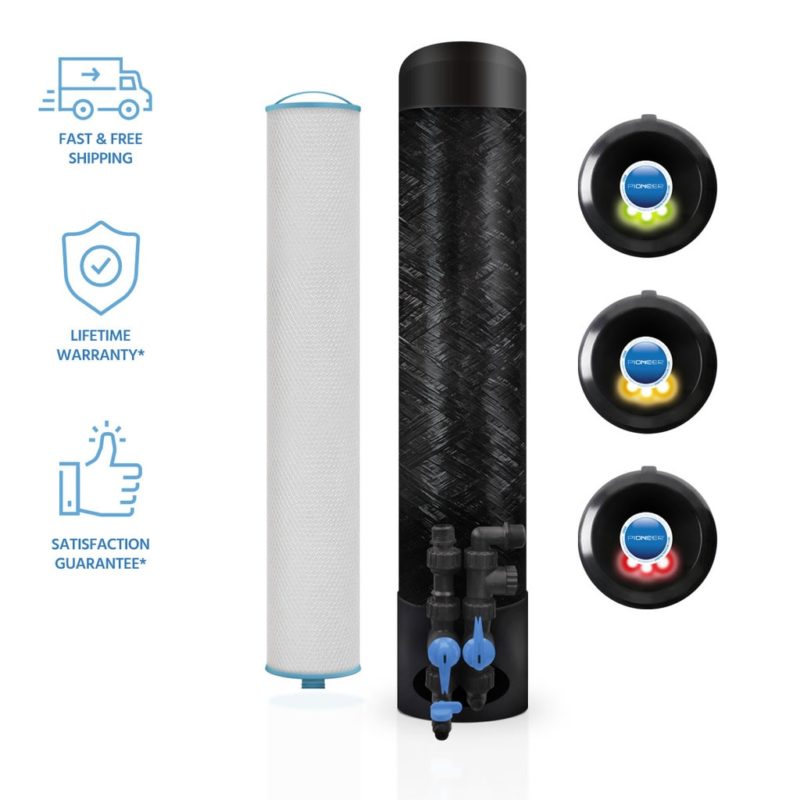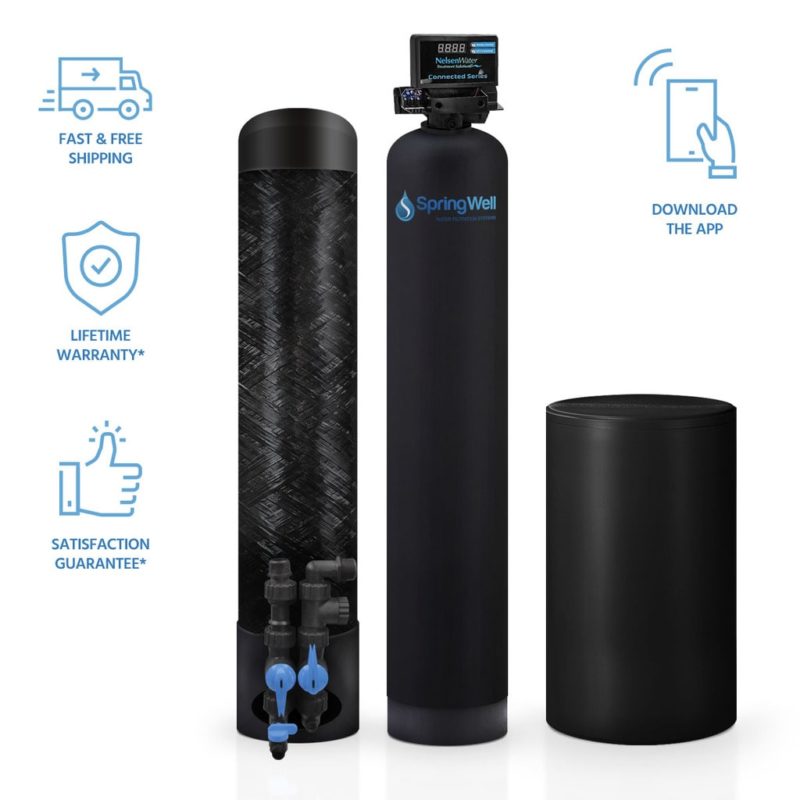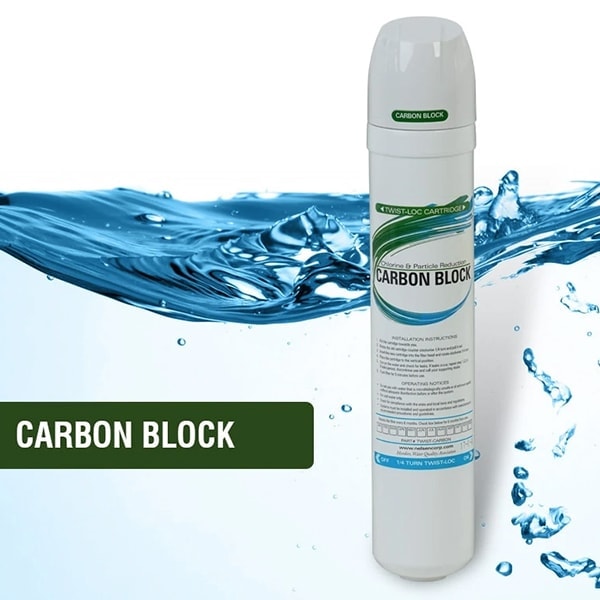Why Some States May Get Less Funds for Lead Pipe Removal & The Possible Impact on City Water
America’s water infrastructure is in terrible shape. The two million miles of underground pipes responsible for supplying clean drinking water to Americans are rapidly deteriorating, exposing millions to dangerous levels of lead. But after years of neglect, the federal government earmarked billions of dollars via a recently passed infrastructure bill to replace lead pipes across the country and hopefully put a dent in the growing lead contamination problem.
Considering the deplorable condition of the nation’s water systems, you’d think every state would finally receive adequate funding to replace its lead service lines and help ensure clean, lead-free water for its residents. However, it turns out that some states could miss out on these crucial funds, leading many legislators and clean drinking water advocates to fear that systems across the country will remain neglected.
Continue reading to discover why some states could receive less funding to remove lead pipes, the specific states that could be shortchanged, and how it could impact their water quality. You’ll also learn about the potential health effects of lead, how the metal gets into drinking water, and a simple but effective water treatment method to protect your water supply from lead contamination, especially if you live in any of the states named below.
Why Some States May Receive Less Federal Funds for Lead Pipe Removal
According to Route Fifty, “State officials and environmental advocates say some states could be shortchanged hundreds of millions in bipartisan infrastructure dollars to remove dangerous lead pipes because the U.S. Environmental Protection Agency has outdated information about the states’ needs.”
The EPA is going by old data. Therefore, “…the allocation formula doesn’t adequately reflect where the needs are,” said Donald Jodrey, Federal Government Relations Director of the Alliance for the Great Lakes, in an interview.
While there are talks that the federal government is looking to update the formula by which they determine each state’s allotment to include lead pipe replacement costs, the EPA currently allocates its Drinking Water State Revolving Fund by assessing state needs from 2018. As a result, the agency may not be able to distribute federal dollars accurately some four years later – at least without the updated information.
“Until the assessment is updated, infrastructure act funding will be distributed ‘based on needs other than lead service line replacement,’” per Route Fifty. “The question now is whether the U.S. EPA can update its needs assessment to include information about lead pipes and incorporate the information before handing out its next tranche of dollars next year.”
Which States Could Be Shortchanged?
According to a study by the Metropolitan Planning Council, a nonprofit think tank, at least 13 states could miss out on federal money to address lead service line replacement needs based on outdated assessments.
Illinois, for example, has some 730,000 lead pipelines, which should earmark it for $1.8 trillion in federal replacement funding, per the council. However, it is only in line to get $565 million, roughly a third of what it should receive. Twelve other states – Massachusetts, Ohio, New York, New Jersey, Missouri, Kansas, Indiana, Minnesota, Wisconsin, Michigan, Iowa, and Nebraska – are expected to receive less funding than they should, based on the group’s estimates.
This is shocking because California is set to receive $1.3 trillion, but its lead pipeline count should grant it somewhere in the region of $159.6 million. Also, based on Texas’ 270,000 lead pipes, its share should be $662.8 million, but according to the study, it is in line for $1.2 trillion, or $513.2 million more than the suggested fair share.
Among other states, Washington, with an estimated 27,000 lead pipes, would get $268.2 million more than what the Chicago group believes should be its share of the dollars. Also, with 82,000 lead pipes, North Carolina is in line to get $259.2 million more than its share.
What Could This Mean for “Under-Funded” States and Their Water Quality?
Unless the EPA and other relevant authorities act swiftly to ensure each state receives its fair share of federal money, lead could continue leaching from old, deteriorating pipes into public drinking water supplies. As a result, more people could ingest lead in their drinking water and develop various health complications.
The presence of lead in drinking water, which can cause severe health consequences for consumers, is typically generated by old, corroded lead pipelines and fixtures. Depending on the water temperature, acidity, mineral content, and how often water passes through the pipe, water may remain in the pipe for longer and absorb lead from the pipe’s internal coating.
These pipes, which transport the treated water into consumers’ homes, usually carry the contaminant and pass it into the household water supply. Without a proper home filtration system to block lead from entering the household, family members are at risk of ingesting the metal and possibly developing a range of health problems.
The most significant risk from lead exposure is impaired brain development, especially in children. However, high lead exposure can damage both children’s and adults’ kidneys and nervous systems, and highly elevated levels can cause seizures, unconsciousness, and death.
On the flip side, if the EPA receives the updated information for state needs and distributes the funds accordingly, there will likely be a significant decrease in the amount of lead detected in public water systems across the various states. However, bear in mind that the solder used to connect the pipes in your home may also contain lead, as might old metal faucets. Also, homes built before 1986 are most likely to have lead problems.
That means, even if all the public lead pipes are replaced, there’s still the chance of lead leaching into household drinking water supplies. Luckily, there’s a way to protect your water supply and ensure your drinking water is free of lead (more on this later).
So, When Will the Data Be Updated?
According to Erik Olson, Drinking Water Advocacy Director for the National Resources Defense Council, “the latest assessment was done in 2018, and generally speaking, states did not include the number of lead pipes they need to remove in the survey,” reported on Route Fifty.
“The question now is whether the U.S. EPA can update its needs assessment to include information about lead pipes and incorporate the information before handing out its next tranche of dollars next year,” Olson said.
In the 2018 America’s Water Infrastructure Act, Congress required states and the EPA to update the 2018 needs assessment sometime this year. But Olson said that work had not been done yet, and the EPA has told advocates it might not be finished until next year.
“Funds will continue to be allocated based on needs that have little or nothing to do with lead service line replacement until then,” Olson said.
However, U.S. EPA spokesperson Robert Daguillard said the agency was in the “final stages” of updating its needs survey from 4,000 drinking water utilities nationally. “EPA is working on analyzing the data so the results may be available as soon as is feasible,” he said.
Olson said, “are urging EPA to finish the needs assessment early enough so that the next tranche of funding next year will reflect the needs of states.”
What To Do If You Live in a State Expected to Receive Less Funding for Lead Pipe Replacement
As we mentioned earlier, lead could continue leaching from old, deteriorating pipes into public drinking water supplies if the EPA and other relevant authorities do not act swiftly to ensure each state receives its fair share of federal money. If the data for state needs isn’t updated and states don’t receive the funding to replace their lead pipes, more people could be exposed to lead in their drinking water and possibly develop various health complications.
The good news is that there’s an affordable and straightforward way to protect your family from lead in drinking water, whether your state is one of those expected to receive less funds for lead pipe removal: investing in a home water treatment system.
Ideally, we recommend shopping for a whole-house system, such as the LCR-1 Whole-House Lead & Cyst Removal System. Whole-home systems are designed to treat all the water entering your household. But unlike standard whole-house models, the LCR-1 not only eliminates over 99.95% of heavy metals such as lead but also removes PFAS and treats cysts, chlorine, chloramine, and other harmful contaminants possibly in your water.
When equipped with our UV Water Purification System add-on, the LCR-1 targets and kills 99% of viruses, bacteria, parasites, and other dangerous microorganisms that may have entered your water supply through leaks and water main breaks on the public pipe network as the water travels to your home.
If you have any questions about our Whole-House Lead & Cyst Removal System or any of our other reliable and innovative water filtration systems, reach out to us at 800-589-5592 or send us a message.
Final Thoughts
America’s water infrastructure is in dire need of repair. It’s so bad that there’s a growing fear that the nation’s lead services lines could be exposing millions of Americans to toxic levels of lead in drinking water. Thankfully, the recently passed infrastructure bill has designated much-needed funds to help combat the widespread lead contamination crisis. It could also help create a more robust and efficient water system to better serve homes in urban and rural areas. The problem, however, is that some states could be left in the cold because many of them could receive significantly less funding for lead pipe removal. That’s because the EPA is going off old data, which doesn’t reflect current states’ needs.
Whether or not you live in any of those states, we urge you to invest in a quality water filtration system to protect you and your family from many dangerous water contaminants leaching into your home from corroding public pipelines, water main breaks, household plumbing, etc.
 Water systems are designed, built, and packaged in the U.S.A.
Water systems are designed, built, and packaged in the U.S.A.



 Replacement Filter - Lead & Cyst System
Replacement Filter - Lead & Cyst System  Replacement Filter - Reverse Osmosis - Sediment
Replacement Filter - Reverse Osmosis - Sediment  Whole House Lead & Cyst Removal System
Whole House Lead & Cyst Removal System  Whole House Lead & Cyst Removal System with Salt Based Softener
Whole House Lead & Cyst Removal System with Salt Based Softener  Replacement Filter - Reverse Osmosis - Carbon Block
Replacement Filter - Reverse Osmosis - Carbon Block  Water Test Kit + Tannins
Water Test Kit + Tannins 

